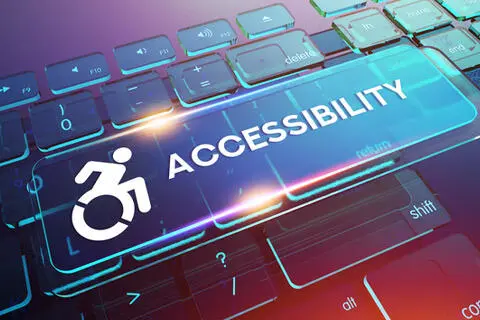General Accessibility

Accessibility Standards cover the general terms as well as everyday considerations such as buildings and homes. This is important as addressing accessibility makes places such as residential and work facilities more unrestricted for all ranges of ability. Besides buildings, work equipment is also considered such as printers, copying machines and more. Television accessibility is covered as well in regards to hearing, sight, mobility and cognitive impairments. These documents published by ISO, IEC, and ICC provide valuable information for general accessibility such as housing accessibility codes, office technology accessibility, and many more that can be applied to a variety of businesses and industries outside of construction. If you or your business is interested in making your products and services more accessible to those who live with disabilities, purchase a standard to instantly receive a digital PDF copy.
IEC 63080 Ed. 1.0 en:2017
Accessibility terms and definitions
IEC 63080:2017(E) contains a list of currently used terminology to describe accessibility and terms that writers of standards need when writing and designing International Standards. It is important to standardize and define a recognized list of the terms already used and in existing ITU Recommendations and Resolutions, along with those in the UN Convention on the Rights of Persons with Disabilities (UNCRPD). Without such a list, there could be confusion not only on the part of writers and implementers of standards, but also by the public at large. It is also important to eliminate terminology that is no longer used, offensive, and demeaning to persons with disabilities (PWD) and others.
ICC A117.1-2017 Errata
Errata - Accessible and Usable Buildings and Facilities
Errata to ICC A117.1-2017
ISO 21542:2021
Building construction - Accessibility and usability of the built environment
This document specifies a range of requirements and recommendations for the elements of construction, building assemblies, components, fittings and products that relate to the design and constructional aspects of usability and accessibility of buildings, i.e. access to buildings, circulation within buildings, egress from buildings during normal conditions, and evacuation in the event of a fire. This document also applies to the common spaces in multi-unit residential buildings. Recommendations regarding residential units are given in Annex A. This document also contains provisions with respect to outdoor features directly concerned with access to a building or a group of buildings from a relevant site boundary, or between such a group of buildings within a common site. This document does not deal with elements of the external environment, such as public open spaces, whose function is self-contained and unrelated to the use of a specific building. This document is applicable to new buildings and new work in existing buildings. This document introduces the concept of 'exceptional considerations for existing buildings' for situations where it is exceptionally difficult to meet the requirements specified and, thus, impossible to provide full accessibility. By means of "exceptional considerations for existing buildings", an acceptable, though restricted, level of accessibility is specified. An exceptional consideration for existing buildings is not to be applied in other situations or invoked in an unjustified manner, or as an excuse for not achieving a higher level of accessibility, where this is economically and/or technically feasible. The dimensions stated in this document, relevant to the use of wheelchairs, are related to the footprint of commonly used wheelchair sizes and users as specified in ISO 7176-5 and ISO/TR 13570-2, 800 mm wide and 1 300 mm long. This document is primarily written for adults with disabilities, but it includes some recommendations on specific accessibility needs of children.
ISO/IEC 10779:2020
Information technology - Office equipment - Accessibility guidelines for older persons and persons with disabilities
This document specifies accessibility guidelines to be considered when planning, developing and designing electrophotographic copying machines, page printers and multi-function devices. These guidelines are intended to improve accessibility required when primarily older persons, persons with disabilities and persons with temporary disabilities (hereafter referred to as older persons and persons with disabilities) use office equipment.
IEC 62944 Ed. 1.0 en:2016
Audio, video and multimedia systems and equipment - Digital television accessibility - Functional specifications
IEC 62944:2016(E) specifies a set of principles and considerations for digital television products in support of older people and persons with disabilities in addition to mainstream users. The effect of following the principles and considerations as set out in this document is to ensure that the widest range of users can access, understand and use digital television products. These principles and considerations cover four main user profiles such as individuals with hearing impairments, individuals with sight impairments, individuals with mobility impairments and individuals with cognitive impairments.





